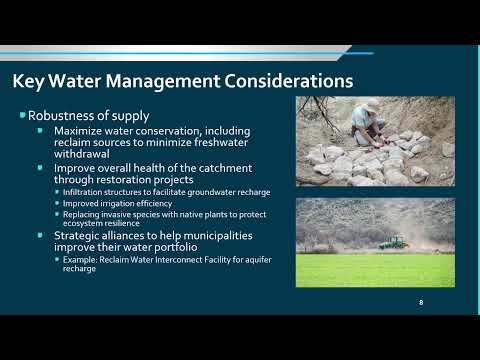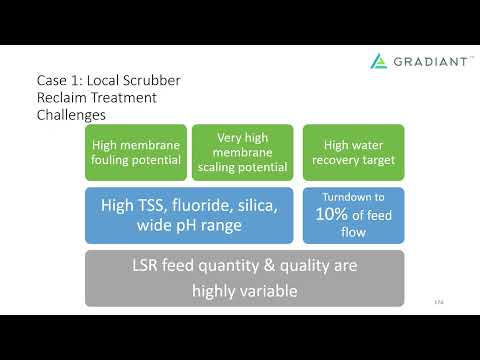
Orla McCoy
Global Water Intelligence
Collaborators
Sponsors

Ionpure
Tags
Ion ExchangeSustainabilityThe Rising Tide of CEDI: Why it is Outshining Traditional Ion Exchange in High-Purity Applications (Part 2)
Part 2 - Sponsored Content
Share this insight
Continuous Electrodeionization (CEDI) technology was first commercialized by Ionpure® in 1987 but has seen remarkable growth in recent years. Part 1 of this article explained how CEDI technology works, and how the structure of the technology is functionally built for continuous resin regeneration and high-quality water production. This second part will delve further into the reasons how these functions mean that industrial end users are increasingly choosing CEDI technology over conventional ion exchange.
Sustainability
Sustainability has been a long-time talking point for industries, but recently has become extremely critical to corporate strategies. Ambitious sustainability goals among multiple industrial end users are instrumental in changing the nature of operations. Pat Buzzell, Product Manager at Xylem, told UPM that ‘although Ionpure® offers return-on-investment savings, when we ask customers why they choose this product, the answer is typically not cost but sustainability and safety reasons.’
The reasons for which CEDI poses sustainability advantages are multi-faceted:
Water Reuse: Traditional ion exchange regeneration produces streams which are either highly acidic or alkaline, and therefore must undergo costly pH neutralization before water reuse. When operators employ CEDI, the reject stream contains higher quality water than that feeding the reverse osmosis (RO) system. Therefore, reclaiming to a later stage in the ultrapure water (UPW) generation system is easier. As a result, water circularity can be achieved with reduced chemical usage.
Chemical-Free Operation: With CEDI, operators do not need regenerative chemicals to ensure consistent high purity water generation – the continuous resin regeneration means the operator requires no continuous need for hydrochloric acid and sodium hydroxide.
Reduced Carbon Footprint: When considering the scope 3 emissions relating to water treatment, CEDI technology presents benefits in comparison to traditional ion exchange resins. Although CEDI uses electricity, the reduced need for service trucks to regenerate the resin often results in a reduced carbon footprint. In addition, there is a reduced load in transporting the regenerant chemicals by plane or road transport. The regeneration waste is also eliminated, which reduces the load on wastewater treatment.
Less waste sent to landfill: An aspect unique to the Ionpure® brand is the opportunity to rebuild or recycle CEDI modules at their end-of-life. Buzzell told UPM that ‘the modules were partially designed so they could be rebuilt or repaired as needed – the form follows the function in this instance.’ The Rebuild Program is a popular option within the pharmaceutical industry, where operators prefer to directly reuse components. However, it is a focus of the Ionpure® team to expand the opportunity to recycle for higher purity applications. Some high flowrate modules used in the semiconductor industry may not be suited to rebuild, so recycle centers have been implemented to avoid sending modules to landfill.
Safety and consistent operation
Consistency: The simplicity of CEDI makes operation easier. Although ion exchange produces water of a high quality, it is still a batch process, and the resin will eventually diminish. The declining nature performance of ion exchange resins forces the operator to make decisions about the regeneration of the resin, which induces unnecessary change management pressure and increases the workload of the engineer to monitor the resin’s life to ensure it is not affecting ultrapure water quality. Switching to a longer-life alternative also reduces the manual, offline work necessary for regenerating the resin.
While the life of ion exchange resin is typically 2-3 years, the life cycle for CEDI is 5-6 years – as such operators can feel confident about producing a steady supply of high purity water for longer.
Less exposure to chemicals: Self-regenerating resins expose the operator to fewer regenerative chemicals like hydrochloric acid and sodium hydroxide. It also means there are fewer chemical-carrying trucks driving through cities or populated areas to reach industrial sites.
Purity
Contaminants removal: Not only does the consistency of operation ensure high quality process water streams over a longer period but select products within the Ionpure® brand can offer impressive contaminant removal rates. For example, the VNX Ultra is a technology option which was launched in 2022 and offers the highest boron reduction rate of anything on the market, typically with ≥ 99.8% boron and silica removal rates. The years of innovation which went into developing this product have specifically catered it to the semiconductor market, where leading-edge advanced chip manufacturers need boron removal down to part-per-trillion levels in water. It is additionally suited to the high flow rates of the semiconductor industry.
Particle precursors: Increasing research in the semiconductor industry is being conducted into particle precursors (high molecular weight organic dissolved compounds) and their impact on wafer yield. The ability to detect and determine the source of these contaminants is an ongoing area of research. Emerging understanding indicates that ion exchange resins are a key contributor of particle precursors. The International Roadmap for Devices and Systems (IRDS) 2022 Yield Enhancement report commented that in recent efforts, ‘ion exchange resin was found to be a major potential contributor of small particles’, as these organic contaminants leach from the resin. In comparison to traditional ion exchange, CEDI only uses a small quantity of ion exchange resin for the same flow rate. As such, it is possible that using this option may reduce the risk of particle precursors affecting yield.
Resource scarcity
Supply chain bottlenecks: Over the course of the COVID-19 pandemic and resulting supply chain issues, some technologies like ion exchange resins have been difficult to procure, with the price of resins soaring. CEDI gives facilities the chance to reduce supply chain woes as much less resin is required. The longevity of the modules also means that operators do not need to take unnecessary risks with selecting different resin vendor types. This also streamlines the logistics of the transport of materials.
Labor shortage: The semiconductor industry is facing an acute labor shortage not just among facilities, but across the supply chain. Engineers or technicians need to be trained in operating water purification systems, and in the case of traditional ion exchange units, somebody needs to service the ion exchange resin. The consistency of operation helps to reduce the need for human interaction in this purification step, and therefore goes a substantial way towards reducing the strain on the industry to provide skilled workers for maintenance tasks.
Footprint: Limited footprint is a problem across industries, but it is a particularly challenging problem for semiconductor facilities, which house equipment of enormous proportions. The size of an Ionpure® module is more compact in comparison to the multiple tanks, columns and mixed beds required for traditional ion exchange. CEDI modules are designed with a compact structure, placing the ion-exchange resin beds and selective membranes in a single housing. It also eliminates the need for the storage of chemical regenerants required for traditional ion exchange.
Return-on-investment
CEDI technology generally presents a return-on-investment in comparison to a regenerable ion exchange system – especially if the operator is renting rather than owning the conventional ion exchange beds. The operational expenditure improvements are comparatively favorable for several customers, as it offers the benefits of eliminating the cost of regenerative chemicals, the service costs of ion exchange, and the potential downtime caused by resin decline.
Please send any enquiries to: ionpure@evoqua.com or find your regional contact.
Share this insight
Related insights
Q&A Results with ElectraMet: Copper recovery from CuCMP Wastewater

Cameron Lippert
Electramet
The Rising Tide of CEDI: Why it is Outshining Traditional Ion Exchange in High-Purity Applications (Part 1)

Orla McCoy
Global Water Intelligence
5 trends from the UPM 2023 Environmental Sustainability Panel

Orla McCoy
Global Water Intelligence
Related resources
Environmental Sustainability - Opening Panel

Keynote panel: Environmental footprint
